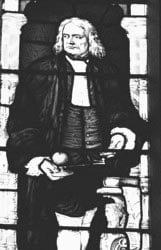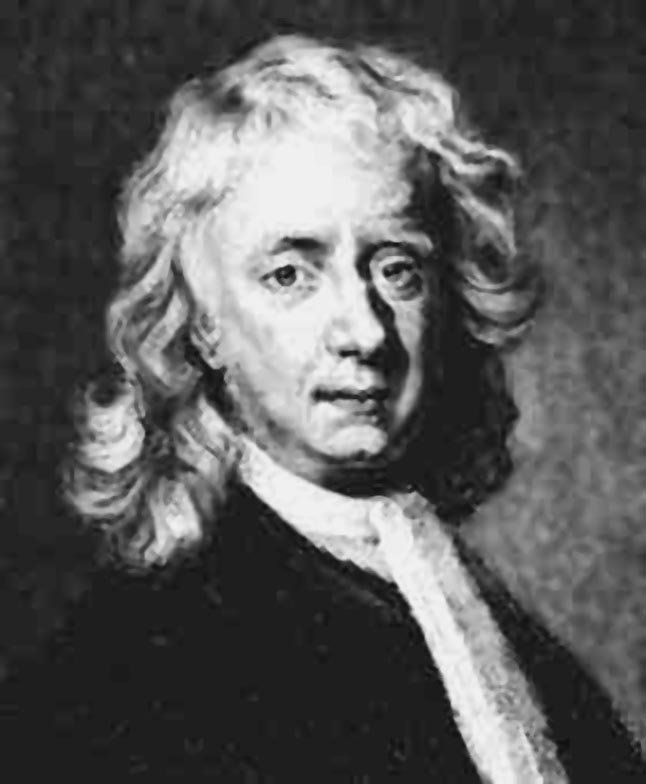After serving for some period as a professor at Cambridge university Isaac Newton came to London in 1696. He had been appointed a warden in the Royal Mint. Three years later he was promoted to the post of the chief of the mint and till death he served on that position.
According to his health Newton tried to give his best to whatever duty he was assigned. As the warden he discovered that the coins that came to the Mint for melting and reminting were either counterfeit or about 20 percent impure. During that period the Royal Mint used to mint gold and silver coins. After some period in circulation those coins used to get worn out and the inscriptions and royal seal mark became vague necessitating their reminting. Some fraudulent characters were substituting the gold and silver of such coins with cheap metals. It was being done with expertise making it difficult to detect at a cursory glance.

Although such acts of fraud with royal coins was considered a serious crime amounting to treason, yet clever ones were stealing 20 percent of the precious metal of the coins and putting in cheap metal. Obviously the reward was worth the risk of capital punishment. If the fraud was proved the culprit could be hanged or cut in two pieces or drowned in water. But proving the crime in the court was not easy and that was another reason why the criminals were taking the risk. But Newton decided to take up the challenge.
To find the clues Newton began to frequent the bars, inns and brothels. He thought the people with criminal minds were lax in morals and debouchees who would invariable be in those places of wine and prostitutes. They did not have permanent living and so they had to be in the inns seeking overnight or temporary sheltering. Newton created a network of informers at those places to keep an eye and report on suspicious characters. There informers collected a valuable data on the criminals and gave it to him. Now Newton had a list of the probable culprits he was after. From the list he picked out those with unknown sources of income but spent like princes. He asked the informers to keep an eye on those characters and their activities. This paid Newton rich dividends and from June, 1698 to X-mas he presented 200 suspected criminals before the courts. On the basis of the statements of the witnesses and circumstantial evidence ten persons were convicted by February, 1699. It was a big success and it gained Newton promotion to the post the chief of the Royal Mint.

In this entire episode a character called William Chelloner had emerged as a principal figure. He was a great arty-crafty fellow. Chelloner had established himself as a rich man with resources and a member of high society. Top officials figured in the list of his friends and he even had access to corridors of political power. Once he addressed a group of the members of parliament and claimed Royal Mint had provided some equipment to the defrauders that helped them mint counterfeit coins which were then given worn out shape and dumped on the Royal Mint. He asked for the permission of the parliament to inspect the Royal Mint to find clues to the mischief. He also requested that he would reveal a new technique for minting the coins which shall make counterfeiting or duplicating them impossible. But during this exercise he minted some counterfeit coins for demonstration. It was bad publicity and big embarrassment for Royal Mint and Isaac Newton felt insulted. But Newton made up his mind to expose the impostoring devil William Chelloner.

He was kept under strict surveillance on the orders of warden, Isaac Newton. At last the defrauder was caught in the act and the truth came out that it was William Chelloner himself who was getting the counterfeit coins getting minted in the Royal Mint. A case was at once filed in the court against Chelloner. But the friends of Chelloner who were in high official positions helped the villain and inspite of the best efforts of Newton, the court dismissed the case and got Chelloner freed. Newton did not give up. He collected more incriminating evidence against Chelloner and again filed a case of forgery against him. This time Newton won. On July 23, 1699 the court held William Chelloner guilty of treason for counterfeiting the Royal coins and sentenced him to death.
In this way, with great determination Newton saved the Royal Mint from the grave forgery act. Today a very few people know that the great scientist Newton had been the chief of the Royal Mint in later part of his life. His act against the forger Chelloner was inspired by his scientific spirit that stood only for the tested truth and genuineness. There is no place for counterfeit values in the life of a true scientist.

